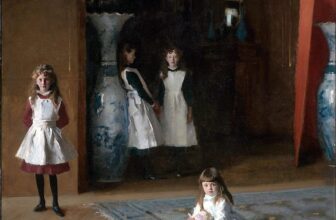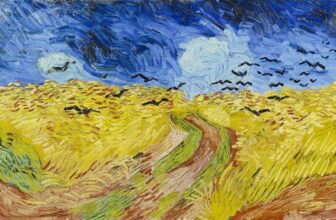The Young Woman with a Unicorn by Raphael
A Symbolic Journey Through Time
In a softly lit room in the Galleria Borghese in Rome, nestled among masterpieces from the Renaissance and Baroque periods, a young woman sits forever in a moment of poised serenity. Her gaze is calm, her posture composed, and in her arms she cradles an unexpected companion , a unicorn. This is The Young Woman with a Unicorn, painted by Raphael around 1505-1506. A work both intimate and enigmatic, this painting has captivated viewers for centuries with its grace, mystery, and symbolism.
But what does this painting mean? Who was the woman? And why a unicorn?
A Glimpse Into the Renaissance: Raphael’s Artistic World
To understand The Young Woman with a Unicorn, we must first step into the world in which it was created , early 16th-century Italy. The High Renaissance was in full bloom, and the city of Florence was a vibrant center of art, philosophy, and humanist thought. Raphael, barely in his early twenties, was emerging as a prodigious talent, influenced by the likes of Leonardo da Vinci and Michelangelo, yet already developing a distinctive voice of his own , one that emphasized balance, clarity, and delicate beauty.
It was during this time that Raphael painted The Young Woman with a Unicorn, likely during his Florentine period. The painting demonstrates his increasing mastery of chiaroscuro, a technique that uses light and shadow to give form and depth, and his growing interest in idealized beauty, an interest that would later culminate in his more famous works like La Fornarina and The Sistine Madonna.
The Mysterious Lady: Who Was She?
Much debate surrounds the identity of the young woman in the portrait. Art historians have offered various theories over the centuries. Some suggest that the portrait may have been a commission from a wealthy patron to commemorate a marriage or engagement. Others propose she might have been a noblewoman, perhaps even Laura Orsini, the daughter of Giulia Farnese and Pope Alexander VI.
There is also speculation that the portrait was originally intended as a depiction of Saint Catherine of Alexandria , a theory supported by X-ray and infrared imaging studies conducted in the 20th century. These studies revealed that the unicorn was not part of the original composition. In the initial version, the woman held a small dog, a common symbol of marital fidelity. The dog was later painted over, and the unicorn took its place.
Even more intriguingly, beneath both the unicorn and the dog, there are faint outlines of a wheel , the symbol traditionally associated with Saint Catherine. This has led scholars to believe the painting may have started as a religious portrait before being repurposed as a secular or allegorical one.
The Unicorn: A Symbol of Purity, Power, and Mystery
Why would Raphael, or whoever altered the painting, choose to replace the dog with a unicorn?
To the Renaissance viewer, the unicorn was no ordinary beast. In medieval and Renaissance symbolism, the unicorn was a complex and powerful icon. It represented purity, virginity, and divine grace , often associated with the Virgin Mary. According to legend, the unicorn could only be tamed by a virgin, and thus it was often used in religious art to signify chastity and sacred femininity.
At the same time, the unicorn also carried more secular connotations of nobility, strength, and mystery. Its rarity and untamed nature made it an appealing metaphor for both spiritual and romantic ideals. In some contexts, it was even linked to Christ , its horn believed to have the power to purify poisoned water, a symbolic echo of redemption.
In The Young Woman with a Unicorn, the creature’s small size and calm demeanor suggest it is not the wild beast of legend, but rather a domesticated emblem of the woman’s inner virtue. She holds it with confidence and ease, her gaze steady, her lips faintly smiling , not as one frightened or subdued, but as one at peace with the symbolic power she possesses.
A Layered Composition: Beauty, Symmetry, and Allusion
The painting itself is relatively small in scale, measuring just 65 x 51 centimeters (roughly 25 x 20 inches). But what it lacks in size, it more than compensates for in composition and technique.
The young woman is seated in a loggia, with a distant landscape of rolling hills and a soft sky unfolding behind her , a compositional device reminiscent of Leonardo’s Mona Lisa, which likely influenced this piece. Her auburn hair is elegantly coiffed, and she wears a richly detailed dress adorned with intricate embroidery and fine jewelry. Her left hand rests gently on the unicorn, whose spiraled horn juts outward from its brow, luminous and sharp.
The symmetry of the composition , the balanced framing, the central axis running down the figure’s body, the triangular shape created by her posture , creates a harmonious and tranquil visual effect. Raphael’s mastery is evident not only in the physical likeness of the subject but in the psychological realism and the serene atmosphere he conjures.
Rediscovery and Restoration: From Obscurity to Masterpiece
Interestingly, The Young Woman with a Unicorn was not always celebrated as a Raphael original. For centuries, the painting was attributed to other artists, such as Perugino, Raphael’s teacher, or even Domenico Ghirlandaio. It wasn’t until the 20th century that scholars began to reexamine the work more closely.
In the 1930s, during restoration efforts, the image of the unicorn was uncovered beneath centuries of overpainting. The creature had been concealed under layers added in the 17th century, which transformed the woman into a more overtly religious figure, complete with a cloak and a palm frond , traditional attributes of Saint Catherine.
The decision to restore the painting to its original state was not made lightly, but once completed, the result was revelatory. The unicorn reappeared, and with it, a fresh appreciation for the subtlety and innovation of Raphael’s early style. The painting was finally recognized for what it was: a luminous example of High Renaissance portraiture with layers of symbolic meaning.
The Female Gaze and Power of Allegory
Beyond its surface beauty, The Young Woman with a Unicorn invites deeper interpretation , particularly in the context of gender and power.
In a time when women were often portrayed either as passive objects of desire or as religious icons, Raphael’s portrait occupies a more ambiguous space. The woman is not demure or withdrawn; she meets the viewer’s gaze with quiet confidence. The unicorn, traditionally a symbol of purity and restraint, is not shackled or controlled, but calmly held. It is a striking inversion of power: the woman tames the wild, not through force, but through virtue.
Some modern interpretations suggest that the unicorn may also represent the woman’s inner spirit or ideal self , a manifestation of her dignity, uniqueness, and control over her own identity. Whether or not Raphael intended such layered symbolism, the portrait resonates with themes of autonomy, strength, and mystery that transcend its time.
Where Is It Today
Today, The Young Woman with a Unicorn is housed in the Galleria Borghese in Rome, one of Italy’s most treasured art museums. The Galleria, originally the private collection of Cardinal Scipione Borghese, boasts an impressive array of works by Caravaggio, Bernini, Titian, and, of course, Raphael.
The painting hangs there among other Renaissance gems, drawing visitors from around the world. For many, it is not just a glimpse into Raphael’s early genius, but a window into a more contemplative and symbol-laden vision of femininity and virtue.
Art has the power to whisper across centuries , to speak of the ideals, beliefs, and longings of another age while reflecting back our own questions and interpretations. The Young Woman with a Unicorn endures because it does more than depict a beautiful woman; it invites us to consider the layered meanings of purity, identity, and perception.
It also reminds us of art’s evolving nature. With each layer uncovered, both literally and metaphorically, we discover new stories hidden beneath the surface. The unicorn, once obscured, now reclaims its place , not just as a mythical beast, but as a symbol of how truth and beauty can be revealed through time, care, and curiosity.
The Young Woman with a Unicorn remains one of Raphael’s most enigmatic and poetic portraits. Through its exquisite detail, balanced composition, and rich symbolism, it continues to invite interpretation and wonder. Whether seen as a portrait of an idealized woman, a coded religious image, or a celebration of feminine virtue and power, it speaks to the Renaissance fascination with beauty, mystery, and the eternal dance between the real and the imagined.
The unicorn, nestled gently in the young woman’s arms, is not just a creature of legend. It is a key , to a world where art, myth, and meaning converge in perfect harmony. And Raphael, with a brush in his young and gifted hand, offers us that key still.




